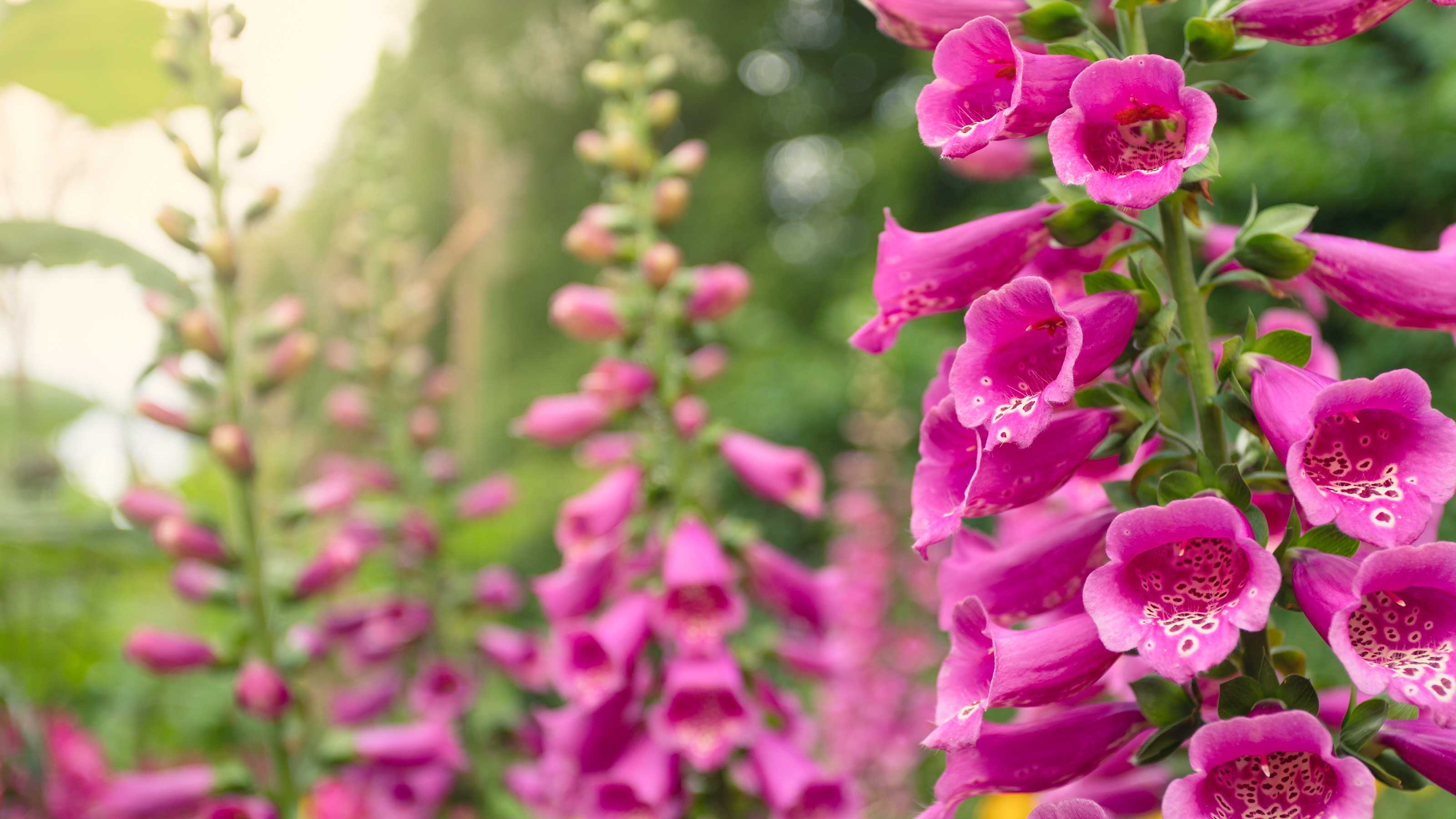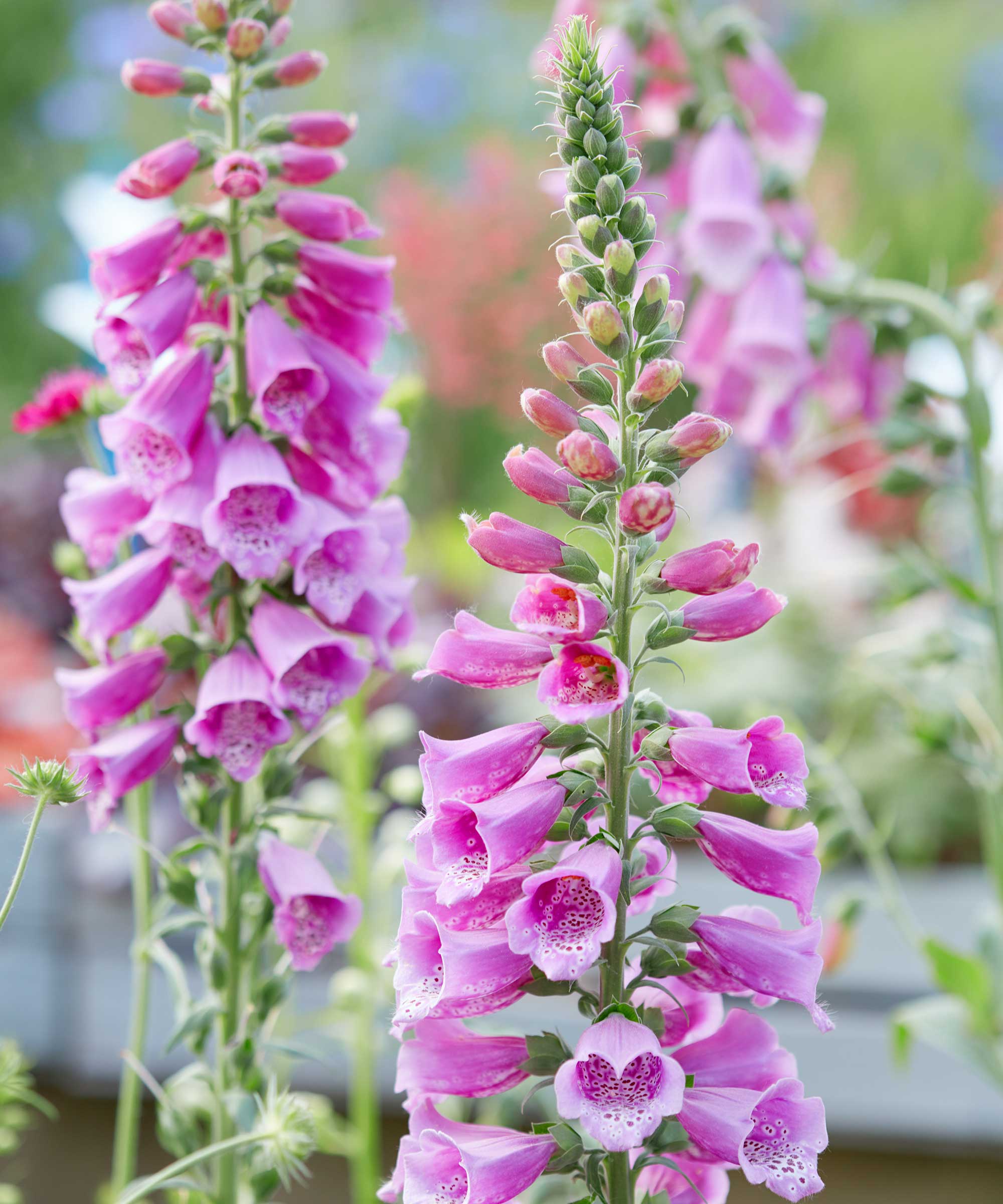How to deadhead foxgloves: neaten up your flower beds with these tips
Wondering whether you should deadhead foxgloves once their beautiful blooms have come to an end? We explain all


As their stunning flowers begin to fade, the notion to deadhead foxgloves may spring to mind. But is grabbing the secateurs and giving them a chop a good idea?
These cottage garden classics add wonderful height and color to a garden. And they're not just for whimsical and romantic planting schemes. Foxgloves – digitalis – are right at home in woodland-style plots and contemporary spaces, as well as wildlife gardens (bees adore them). Plus, foxglove care is relatively simple.
But once their summertime blooms are over, you might find that their straggly appearance spoils the rest of the show. Or perhaps you're wondering whether cutting them back will encourage a second flush of their showy spires, similar to many rose varieties. Well, you're in luck – this guide explains when, why, and how to deadhead foxgloves so you can get the most from these gorgeous plants.

Cutting back foxgloves has a few benefits
How to deadhead foxgloves in 3 simple steps
Smarten up your flower beds quickly and easily.
- Deadhead foxgloves as soon as the flowers have started to droop.
- Wearing gloves (foxgloves are poisonous), take your best secateurs, ensuring they are sharp and clean.
- Remove the entire flower stem, cutting just above the first or second set of leaves at a 45-degree angle. The stems can then be discarded – some gardeners avoid putting them on the compost heap as the seeds have a tendency to germinate easily and could end up being accidentally spread all over the garden.

Snip away spent flower stems to encourage more flowers
Why should you deadhead foxgloves?
Removing dead and droopy blooms will instantly give your borders a fresher look. But it's not just about the aesthetics. As the RHS explains, removing foxglove flower stems as soon as they have faded stops them from producing seeds, meaning it helps the plant to conserve energy.
With perennial forms, this encourages their longevity. With biennials, it can lead to a smaller, second flush of flowers later in the season and encourage the plant to live and flower for another year. However, this doesn't always happen, meaning it's best to have backup plants just in case.
But remember that by preventing biennials from going to seed, you will be stopping them from self-sowing a second generation of plants. This may be your intention – as Amateur Gardening expert John Negus says, 'These plants are prolific seeders, so if you want to contain their numbers, deadhead them after flowering.'
If, on the other hand, you want to encourage a new supply of young plants next year, the RHS recommends leaving a few stems intact. Collect the seeds once they are ripe to raise new plants in pots, or allow them to grow where they naturally fall if you don't mind a less orderly look for your flower beds. You can find more info on collecting seeds from flowers in our dedicated guide.

The garden was always a big part of Holly's life growing up, as was the surrounding New Forest where she lived. Her appreciation for the great outdoors has only grown since then. She's been an allotment keeper, a professional gardener, and a botanical illustrator – plants are her passion.
